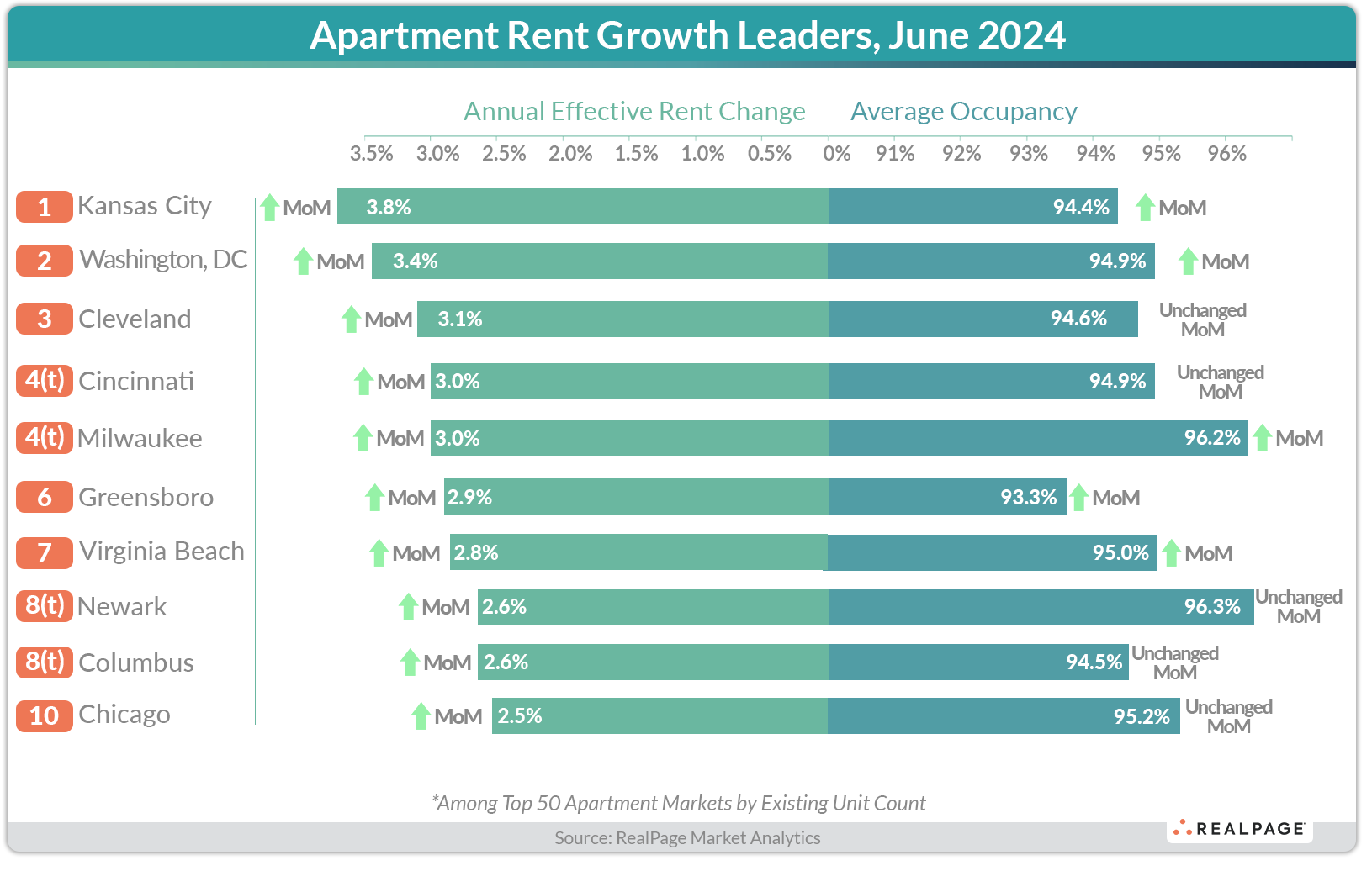While supply continues to garner the lion’s share of apartment industry-focused headlines, there’s an equally remarkable demand surge brewing across the U.S. apartment market.
In fact, the impressive demand reading in the year-ending 2nd quarter 2024 may be difficult to overstate. Some 390,000 apartment units were absorbed on net over the past 12 months, according to data from RealPage Market Analytics. Dating back to the start of the new millennium, this latest annual reading ranks as the eighth-largest figure on record. Only the pandemic-era boom from mid-2021 to mid-2022, the year-ending 3rd quarter 2018 and the year-ending 4th quarter 2000 figures outpaced that of the past 12 months.

But perhaps most impressive within the context of the pandemic era boom is how many units have been absorbed year-to-date. Some 257,000 units have been absorbed during the first two quarters of 2024, essentially in line with the all-time high set in the pandemic-era demand swell which saw about 270,000 units absorbed in the first half of 2021.
While the gap is closing, record supply continues to moderately outpace demand. More than half a million new market-rate apartment units delivered in the past 12 months. This not only represents a 45% increase from the same time horizon in the previous 12-month period, but it is remarkably the highest total number of apartment units delivered since 1986. Considering an additional 629,000 market-rate apartment units are expected to deliver in the next 12 months, headlines will most likely continue to focus on supply-side fundamentals.
Apartment Occupancy and Rent Growth Stabilize
The narrowed gap between supply and demand is exhibited by stabilized national occupancy and rent growth rates. Occupancy remained at 94.2% in June, holding steady for three consecutive months.
Though demand is arguably exceptional by historic norms, rent growth has yet to respond in a congruent manner. This ultimately points back to the interplay between supply and demand, whereby a four-decade peak in new deliveries is keeping rent expansion modest.
Rents grew 0.2% in the year-ending June. It’s unlikely that rent growth sees considerable acceleration in calendar year 2024. Still, stabilization of rental rates considering the background of a two-generation supply wave supports the idea of incredible demand capacity in the market today.
South Region Dominates for Demand
Demand improvement in the year-ending 2nd quarter 2024 is true across all four U.S. regions, though the South region continues to dominate in terms of aggregate demand. Some 226,000 units were absorbed on net in the past 12 months within the South region. That was nearly 60% of the nation’s total demand despite making up just 42% of the nation’s existing units.
Meanwhile, the West region recorded annual absorption of 89,000 units. Though this has yet to translate to any rent growth momentum, it’s worth noting that this was the West region’s strongest annual absorption figure in two years. Considering the West region’s quarterly absorption figure (39,200 units) was the largest total since mid-2021, there may be some early indications that fundamentals are improving after a challenging two-year stretch.
The annual figures for the Northeast (30,500 units) and the Midwest (44,100 units) remain more modest, though correspondingly modest supply pressure means those two regions are seeing larger annual rent growth.
Midwest Region Still Dominates for Rent Growth
Of the 10 major markets that posted annual effective rent growth of 2.5% or higher in June, all but one (Columbus) posted concurrent annual inventory growth below the national norm. The lower the annual inventory, the more likely a market is to post solid rent growth.
On the other hand, markets receiving the most new apartment supply continued to experience the most downward pressure on rents. Of the 10 major markets posting annual rent cuts of 3% or deeper in June, all posted concurrent annual inventory growth above the national norm. As has been the case for months, markets delivering nationwide leading new supply volumes – such as Austin, Atlanta and Dallas – were among the national laggards for rent positioning in June.










